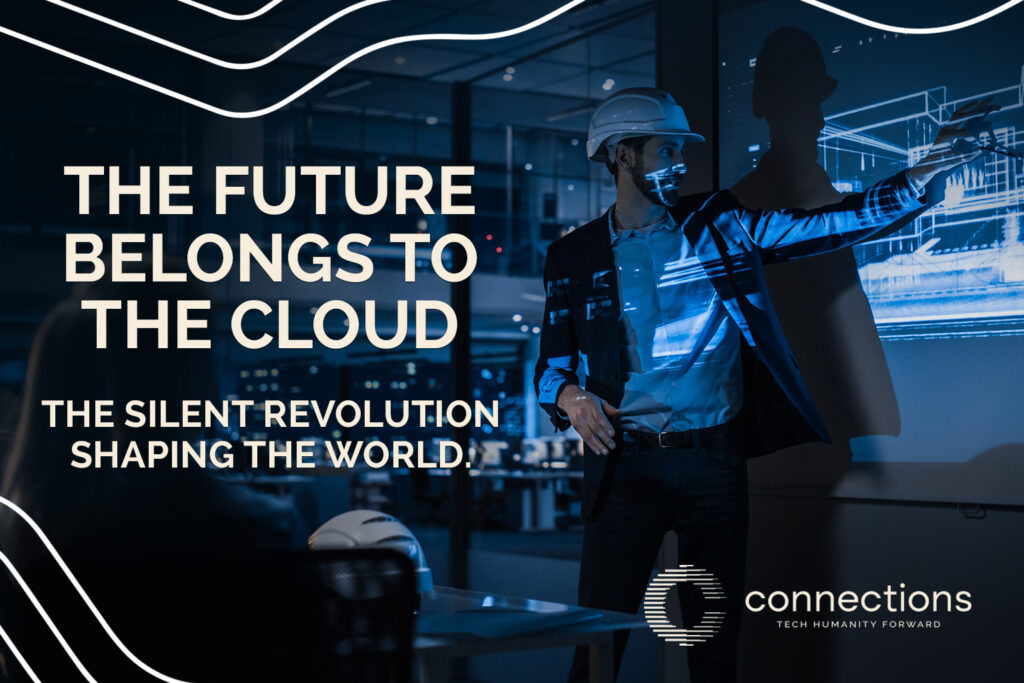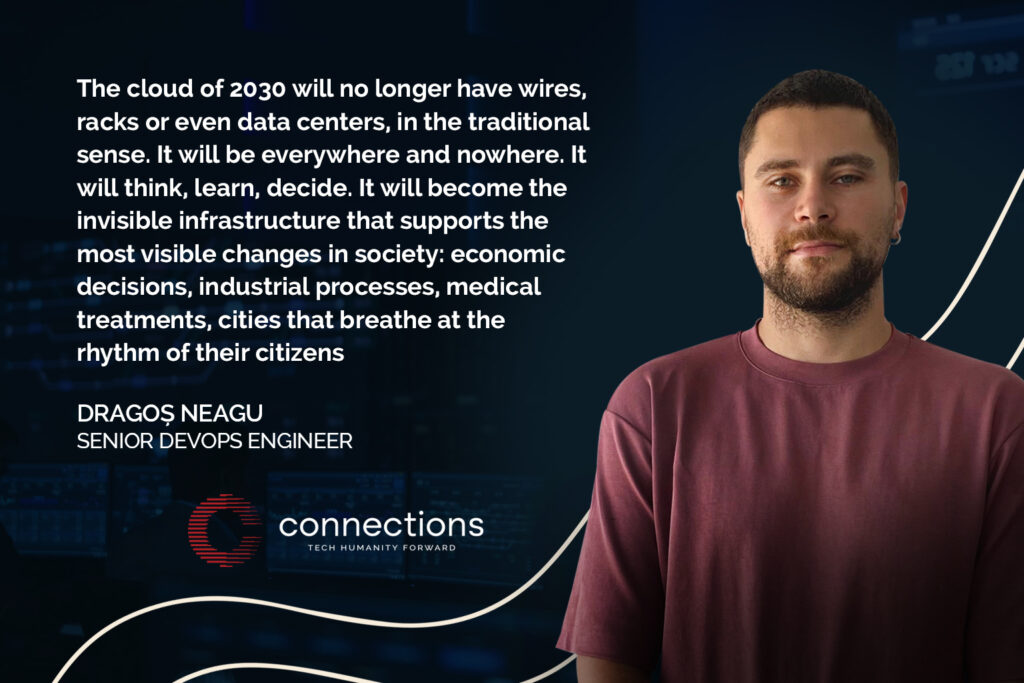
Few technologies have made their presence felt in our lives as discreetly and, at the same time, with such a radical impact as the cloud. It began as a practical solution for outsourcing servers. Then, it transformed into a catalyst for digital agility, and now, at the border between 2025 and the next decade, it is becoming the foundation on which everything that means intelligence, autonomy and economic progress will be built. The cloud is no longer a data warehouse, but is becoming the central nerve of a world that thinks, reacts and evolves in real time.
Today, large corporations operate in multi-cloud and hybrid environments, migrating agilely between public, private and edge solutions, in search of a balance between cost, performance and compliance. Container-based ecosystems, orchestrated with technologies such as Kubernetes, allow applications to be moved quickly and scaled globally without being constrained by a single platform. This freedom of movement is vital in a world where time-to-market makes the difference between leaders and survivors.
But what comes next is even more spectacular.
Quantum computing, until recently the preserve of laboratories and theoretical research, is entering the cloud. Adobe, Google, IBM and Amazon are investing heavily in quantum cloud services that will allow the processing of volumes of data that are impossible to imagine today. Areas such as advanced AI, post-quantum cryptography or molecular simulation will make a leap of decades in a decade. Materials science, personalized medicine and even climatology will benefit from this raw computing capacity delivered as a service. At the same time, AI is becoming native to the cloud. Intelligent automation is no longer a functionality, but a basic architecture. Algorithms analyze data flows, predict consumption, detect security anomalies and redistribute resources according to needs, in real time. Basically, cloud platforms become living systems, with self-regulation and self-protection. A NoOps world is emerging – without dedicated operations teams – in which everything that means infrastructure is automated end-to-end. Developers no longer interact with servers, but with the idea of a platform, focusing exclusively on delivering value.
And it’s not just data centers that matter, but also what happens at the edge of the network. Edge computing, in combination with 5G and the future 6G networks, brings processing as close as possible to the user – be it an autonomous car, a smart city or an industrial robotic arm. Latency collapses, speed increases, and critical real-time applications become possible without compromise. It’s a new Internet of Things – but with a brain and instant reaction.
At the same time, we are approaching a phase of “green cloud”. The pressure for sustainability is forcing large providers to invest in energy-efficient data centers, powered by renewable sources, optimized with AI for minimal consumption. Microsoft, Google and Amazon are proposing carbon neutrality by 2030, and this is no longer just PR, but a competitive differentiator.
The future also brings a rethinking of security. Zero Trust architecture becomes standard – no one is considered trustworthy by default. Any access is validated in real time, any transaction is verified, any breach is anticipated through machine learning. And blockchain also finds its place in the cloud – not as a currency, but as a trusted infrastructure for identity management, data traceability and decentralized governance. Web3 promises a cloud without guards, distributed, immutable and with transparent rules. As industries specialize, the cloud also becomes smarter. Tailor-made services will appear for health, banking, education or retail – each with its own requirements for speed, compliance or integration. Personalization will be taken to the extreme: cloud applications will learn the user’s work style and adapt in real time, delivering customized interfaces, recommendations and operational flows.
It all sounds futuristic – and it’s all already underway.
But with opportunities come challenges. Prices for public cloud services are rising. Pricing models are sliding towards complexity, and the lack of a stable contractual framework can turn a strategic bet into a budget trap. Fierce competition between providers can lead to fragmentation and lack of standardization, while regulations (such as GAIA-X in Europe or AI norms) require compliance that can slow adoption.
By 2030, the cloud will no longer be a technology option, but the infrastructure of digital life. We will live, work, and innovate on platforms that will know more than we know about our own needs. Companies that adapt quickly, building cloud-native capabilities, will ensure not only their resilience but also their relevance. For the rest, the risk will not only be technological, but existential.
In the face of this transformation, a question becomes inevitable: are we ready to think of the cloud not as a tool, but as an extension of collective intelligence? It’s no longer just about where our data is stored, but where our future lives.

“The cloud of 2030 will no longer have wires, racks or even data centers, in the traditional sense. It will be everywhere and nowhere. It will think, learn, decide. It will become the invisible infrastructure that supports the most visible changes in society: economic decisions, industrial processes, medical treatments, cities that breathe at the rhythm of their citizens” – Dragoș Neagu, Senior DevOps Engineer
And leaders who will understand this new digital contract – based on agility, transparency and responsibility – will not only build more efficient companies. They will build living, interconnected, resilient ecosystems, where innovation is not a goal, but a state of normality.
So, the challenge is not to be “in the cloud”. But to be of the cloud – part of a shared, distributed, ethical and progress-oriented intelligence. A future in which technology no longer assists us, but amplifies us.
The rest… is just implementation.